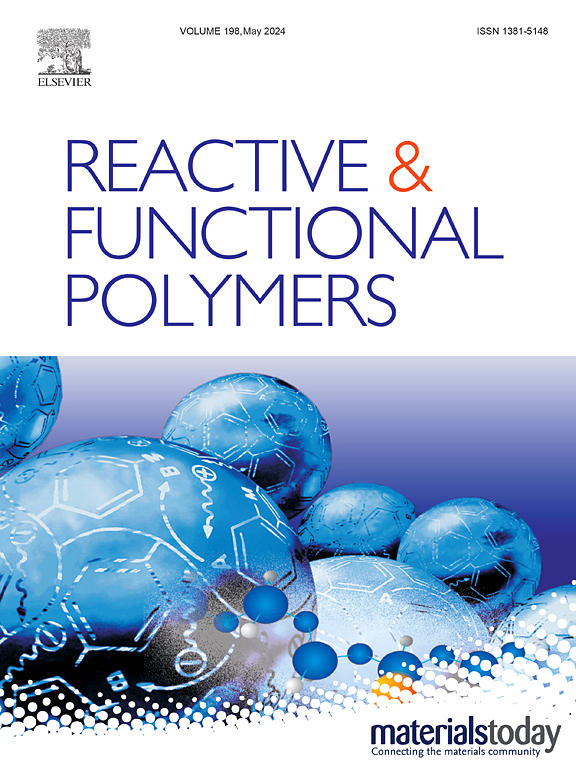生产可重复使用的比色氰化物传感器水凝胶,用于快速检测各种水介质中的氰化物离子
IF 4.5
3区 工程技术
Q1 CHEMISTRY, APPLIED
引用次数: 0
摘要
本研究开发了一种适用于氧化还原聚合法合成水凝胶的新型(半)花青素染料衍生HC-M单体,并通过多种方法对其进行了表征。HC-M单体的特点是在CN -离子存在下变色。因此,当以共价键的单体加入任何水凝胶结构时,可以生产出对CN -离子高度敏感并具有比色功能的水凝胶。为此,合成了p(AAm-co-HCM)水凝胶。通过膨胀实验、傅里叶红外光谱(FTIR)和扫描电镜(SEM)对合成的水凝胶进行了表征。所合成并表征的新型单体和p(AAm-co-HCM)水凝胶用于检测各种水介质和一些液态食品中的CN -离子。为此,在0.05 - 100ppm范围内使用了不同浓度的CN -。因此,产生了一种新型的水凝胶结构,可以在1-660分钟的时间范围内通过改变颜色来定性地确定CN−在任何水环境中的存在。研究表明,所得到的水凝胶可以多次用作传感器,由于它们的共价键,适合再生。本文章由计算机程序翻译,如有差异,请以英文原文为准。

Production of reusable and colorimetric cyanide sensor hydrogels for rapid detection of cyanide ions in various aqueous media
In this study, a new type of (hemi)cyanine dye-derived HC-M monomer suitable for hydrogel synthesis by redox polymerization method was developed and characterized by various methods. The feature of HC-M monomer is that it changes color in the presence of CN− ions. Thus, when added to any hydrogel structure as a comonomer with covalent bonds, hydrogels that are highly sensitive to CN− ions and function colorimetrically can be produced. For this purpose, p(AAm-co-HCM) hydrogels were synthesized. The synthesized hydrogels were characterized by swelling tests, Fourier transform infrared spectroscopy (FTIR), and Scanning Electron Microscopy (SEM) analyses. The synthesized and characterized new type of monomer and p(AAm-co-HCM) hydrogels were used to detect CN− ions in various aqueous media and some liquid foods. For this, various concentrations of CN− in the range of 0.05–100 ppm were used. Thus, a new type of hydrogel structure was produced that qualitatively determines the presence of CN− in any aqueous environment by changing color in the time range of 1–660 min. It has been shown that the resulting hydrogels can be used as sensors many times, suitable for regeneration, thanks to their covalent bonds.
求助全文
通过发布文献求助,成功后即可免费获取论文全文。
去求助
来源期刊

Reactive & Functional Polymers
工程技术-高分子科学
CiteScore
8.90
自引率
5.90%
发文量
259
审稿时长
27 days
期刊介绍:
Reactive & Functional Polymers provides a forum to disseminate original ideas, concepts and developments in the science and technology of polymers with functional groups, which impart specific chemical reactivity or physical, chemical, structural, biological, and pharmacological functionality. The scope covers organic polymers, acting for instance as reagents, catalysts, templates, ion-exchangers, selective sorbents, chelating or antimicrobial agents, drug carriers, sensors, membranes, and hydrogels. This also includes reactive cross-linkable prepolymers and high-performance thermosetting polymers, natural or degradable polymers, conducting polymers, and porous polymers.
Original research articles must contain thorough molecular and material characterization data on synthesis of the above polymers in combination with their applications. Applications include but are not limited to catalysis, water or effluent treatment, separations and recovery, electronics and information storage, energy conversion, encapsulation, or adhesion.
 求助内容:
求助内容: 应助结果提醒方式:
应助结果提醒方式:


